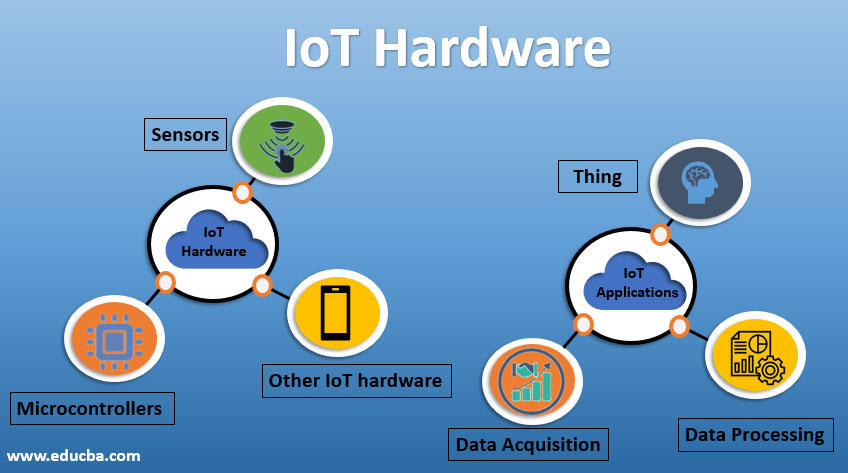An IoT system typically consists of several key components that work together to enable the functionality and connectivity of devices. Here are the main components of an IoT system:
- Devices and Sensors: IoT devices are the physical objects that collect and transmit data. These devices can include sensors, actuators, and various embedded systems. Sensors gather data on attributes such as temperature, humidity, motion, location, or other environmental factors. Actuators allow the system to take actions based on the received data, such as turning on/off a device or adjusting settings.
- Connectivity: The connectivity component enables devices to communicate with each other and with the internet. IoT devices can utilize various communication technologies, such as Wi-Fi, Bluetooth, cellular networks, Zigbee, or LoRaWAN. The choice of connectivity depends on factors such as range, power consumption, data rate, and network infrastructure availability.
- Data Processing and Storage: IoT systems generate a massive amount of data, and processing and storing this data is a crucial component. Edge computing is often employed, which involves performing data processing and analysis at or near the device itself. This approach reduces the need to transmit all data to centralized servers or the cloud, enabling real-time or near-real-time decision-making and reducing network latency. Cloud platforms are also used for data storage, advanced analytics, and scalability.
- Cloud Infrastructure: Cloud platforms provide the infrastructure and services for data storage, processing, and analytics. They offer scalable and secure environments to handle the vast amount of data generated by IoT devices. Cloud platforms can also provide additional services like machine learning algorithms, data visualization, and remote device management.
- IoT Gateway: IoT gateways act as intermediaries between IoT devices and the cloud. They provide connectivity, protocol translation, and data filtering capabilities. Gateways collect data from multiple devices, aggregate it, and transmit it to the cloud for further processing. They can also perform edge computing tasks, such as local data analysis or filtering, before sending relevant information to the cloud.
- Data Analytics and Insights: IoT systems rely on data analytics to extract valuable insights from the collected data. Advanced analytics techniques, including machine learning and artificial intelligence, are employed to uncover patterns, trends, and anomalies. These insights help in making informed decisions, optimizing processes, and enabling predictive maintenance.
- Applications and User Interfaces: IoT applications and user interfaces enable users to interact with the IoT system and devices. This can be through web-based dashboards, mobile applications, or other software interfaces. Users can monitor device status, control functionalities, receive alerts, and access data visualizations and analytics.
- Security and Privacy: Security is a critical component of an IoT system. IoT devices and the data they transmit are vulnerable to cyber threats. Security measures such as data encryption, access controls, secure communication protocols, and firmware updates are essential to protect IoT devices and the data they collect. Privacy concerns also need to be addressed, ensuring that personal or sensitive data is handled securely and in compliance with data protection regulations.
These components work together to enable the connectivity, data collection, processing, analysis, and interaction within an IoT system. The specific implementation and architecture of an IoT system may vary depending on the application and requirements.
SHARE
